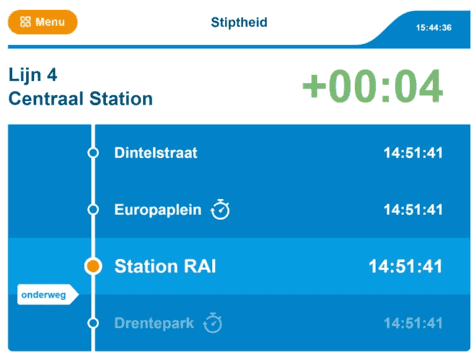How Public Transport Operators gain control on vehicle operations
Boaz Maurits
February 23, 2018
On any Public Transport Vehicle (PTV), there are multiple on-board systems that are required to operate the vehicle and it’s services. Running the specific services is complex and the lack of standardisation is resulting in high operational costs. Additionally, the cost of change is rising, as a result of the vendor lock-in. To regain more control and reduce the risk at the same time, a Dutch PTO has decided to introduce it’s own IP based – on-board – platform, that will be introduced for their new and existing fleet of PTV’s. This Generic Vehicle Architecture (GVA) platform, will be implemented on the PTO’s vehicles and Ximedes has been assigned to develop and deploy this IP based platform.
The solution
By enabling a data exchange between functional components and underlying services, the PTV turns into a Local Area Network (LAN). Services can interact with each other by sending specific commands to – or exchange messages between – the services. The communication between the services is IP based, and is standardised. The technical specifications are described in the prEN13149-7 and specifies the Network and System architecture. This includes the network toplogy, basic network services, a system overview, adresses schematics and a basic module architecture. An Internet Protocol based Integrated Onboard Infomation System (IBIS-IP) will be deployed, so that the different devices – using the same protocol – are on one infrastructure as opposed to having multiple infrastructures, back-offices and on-board units.


Illustration 1: Multiple versus Single on-board infrastructure
The advantages
By deploying the GVA platform, any PTO (or any Public Transport Authority – PTA) will regain control on the hardware components and the services of the vehicle. The result is reduced costs & complexity, while increasing the interoperability of new and existing systems, like eTicketing (validators), information displays, VeCom, dynamic travel information, etc.
There are a number of clear advantages of implementing the technical specifications of the prEN13149-7. It will be easier to:
- Integrate new services and develop new components;
- Save cost and minimise risk on the on-board integration of new and existing equipment and services;
- Increase effciencies on the operation and maintenance of the on- board equipment and services;
- Provide up-to-date, dynamic intermodal passenger services, based on intermodal Public Transport information.

Illustration 2: Driver HMI, being one of the services
The role of Ximedes
Ximedes has realised the GVA platform, based on the prEN131419-7, referencing the ITxPT and VDV-301 implementations, by designing and implementing three architectural visions on the system:
- Services are network Services. Discovery of the services via mDNS & DNS-Sd (language independent).
- The platform provides Services and Applications that enable a PTO/PTA to orchestrate Services of 3rd parties. System management software has been developed that deals with the preferred configuration and the required services, to enable and monitor the right set of Services.
Want to know more? Feel free to reach out to us at info@ximedes.com
Ximedes will be exhibiting at IT Trans (Karlsruhe), from 6 – 8 March ’18.
